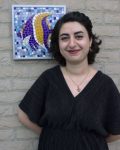Translational Neurophysiology
Research team
Our goal is to understand the function and dysfunction of oscillatory brain networks and precisely map out their anatomy. To achieve this we use simultaneous MEG and invasive recordings in Deep Brain Stimulation (DBS) and epilepsy patients.
Our research will help focus DBS treatment on pathological brain activity and avoid the locations and stimulation patterns that could cause side effects. Simultaneous invasive recordings also help validate MEG analysis methods, particularly analyses of functional and effective connectivity.
Ongoing studies
Studying cortico-subcortical communication using combined invasive and non-invasive recordings
Project 1. Oscillatory activity and connectivity in Chronic Cluster Headache and depression
Deep Brain Stimulation (DBS) of the Ventral Tegmental Area (VTA) has been proven to be an effective therapy for refractory chronic cluster headaches (CCH). About 50% of CCH patients exhibit co-morbid mood disorders. However, effects of VTA-DBS on human cognition, mood and quality of life have not been studied in detail. Clinical studies have highlighted blunted reward prediction error (RPE) in mood disorders. This study aims to characterize VTA oscillatory activity at rest as well as determine whether RPE are encoded in human VTA.
Project 2. Combining telemetric streaming of intracranial signals with MEG and EEG
One major line of research in DBS is the characterization of its effect on large-scale brain networks. Such insights can be provided by combining recordings from the DBS electrodes with simultaneous MEG or EEG. Our previous studies have mostly focused on MEG due to the practical complications of externalised wires which hinder the placement of an EEG cap. However, MEG limits the amount of movement, and is in addition is heavily affected by the ferromagnetic and electrical stimulation artefacts of DBS. The newer generations of DBS technology, such as the Percept PC provided by Medtronic, now offers high-quality wireless recording in patients with chronically implanted stimulators, opening new possibilities for neuroscience research. Our current project focuses on measuring simultaneous high-density EEG and local field potentials from Percept PC in patients with movement disorders such as dystonia and Parkinson’s disease, both on and off DBS. At the same time, we acquire movement tracking data. We are also exploring the feasibility of combining telemetric streaming with cryogenic and wearable MEG.
Other invasive and non-invasive human neurophysiology
Project 3. Anhedonia
Depression in the UK is common affecting 8 in 100 people, and this has been exacerbated by the COVID pandemic. Anhedonia, the inability to feel pleasure, is present in a third of depressed patients. Equally up to half of medication refractory epilepsy patients suffer with depression, with anhedonia being a common and debilitating symptom, impacting quality of life and seizure control. While surgery can be highly effective for seizure freedom, the mechanistic reasons behind change in mood scores post-surgery remain poorly understood. This study aims to significantly advance our understanding of anhedonia at a neural and circuit level, and to predict how epilepsy surgery will affect amygdala-prefrontal circuitry and subsequent anhedonia at a group and individual level. Patients will undergo MEG and intracranial EEG while performing validated reward processing tasks, which will provide unprecedented, anatomically-specific and temporally-precise insights into brain activity during the same reward processing tasks. This multimodal dataset will be the basis of advanced computational modelling to predict likelihood of persistent anhedonia following surgical intervention.
Project 4. Non-invasive measurement of the brainstem
The brainstem is critical to many normal functions including locomotion, arousal and emotions. Brainstem dysfunction occurs across a range of common neurological diseases, from headache disorders like migraine through to neurodegenerative conditions such as Alzheimer’s and Parkinson’s disease. However, how brainstem changes contribute to these conditions remain poorly understood, and the technical challenges recording human brainstem activity in vivo represents one of the major barriers here. In this project we will leverage experimental paradigms known to activate brainstem substructures. Combining EEG or OPM with advanced MRI, we will deliver a robust approach to detect and map brainstem oscillations at the individual subject level. The resulting approach will be broadly applicable to many other diseases, and we will use it in the future to study Parkinson’s disease.
Large-scale brain modelling
Project 5.
This project focuses on modelling transient cortico-subcortical oscillatory patterns of electrophysiological data with a whole-brain approach. In the first study (Cabral, Castaldo et al, 2022), we used the principle of synchronization to model damped oscillators connected by the brain connectome, resulting in the generation of electromagnetic waves similar to brain rhythms. The signals produced by the model demonstrated that a critical range of coupling exists, which causes some subsets of brain areas to synchronize transiently, driving the emergence of collective waves similar to those detected by EEG and MEG.
We then adopted a multi-modal (MEG and fMRI) and multi-model approach (two models with varying degrees of detail) to link distinct electromagnetic and hemodynamic features of brain activity to the dynamics on the brain’s macroscopic structural connectome (Castaldo et al, 2022). This study demonstrated the emergence of static and dynamic properties of neural activity at different timescales from networks of delay-coupled oscillators at 40 Hz.
The use of whole-brain models is particularly useful in testing potential treatments for brain disorders, including drugs and brain stimulation techniques. Models can be used to identify the signatures of in silico brain perturbation required to promote effective transitions between distinct brain states. Currently, our focus is on testing various perturbation strategies to enhance the efficacy of brain stimulation techniques in reducing symptoms in neuropsychiatric disorders where brain rhythms are disrupted (Vohryzek et al, 2023).
Main Collaborators
- The Unit of Functional Neurosurgery, NHNN (Eoin Mulroy, Patricia Limousin, Tom Foltynie, Harith Akram, Ludvic Zrinzo)
- Umesh Vivekananda (Department of Clinical & Experimental Epilepsy, UCL)
- Chunyan Chao (Ruijin Hospital, Shanghai)
- Douglas Steele (University of Dundee, Scotland)
- Joana Cabral (University of Minho, Portugal)
- Gustavo Deco (UPF, Barcelona)
Group alumni
- Ashwani Jha (Brain Repair & Rehabilitation, UCL)
- Ashwini Oswal (University of Oxford)
- Tim West (University of Oxford)
- Bernadette Van Wijk (Vrije Universiteit Amsterdam, Amsterdam)
- Zita Eva Patai (Ruhr-Universität Bochum, Bochum)
- Wolf Julian Neumann (Charite, Berlin)
- Siqi Zhang (Insitut des Sciences Cognitives, Lyon)
Team


